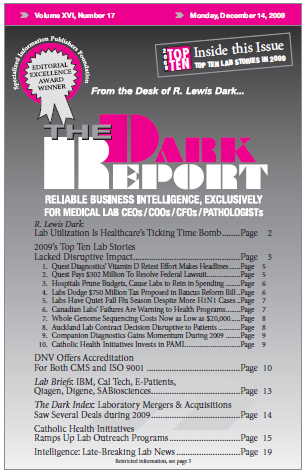DNA NANOCHIP IS GOAL OF IBM SCIENTISTS ADVANCES IN GENETIC AND MOLECULAR TECHNOLOGIES are giving pathologists new tools for diagnosing disease and guiding therapy. But what often receives less attention is how genetic and molecular technologies are finding applications in other scientific fields. In the September issue of Nature Nanotechnology, researchers at IBM Corp. and …
IBM, Cal Tech, E-Patients, Qiagen, Digene, SABiosciences Read More »
To access this post, you must purchase The Dark Report.


